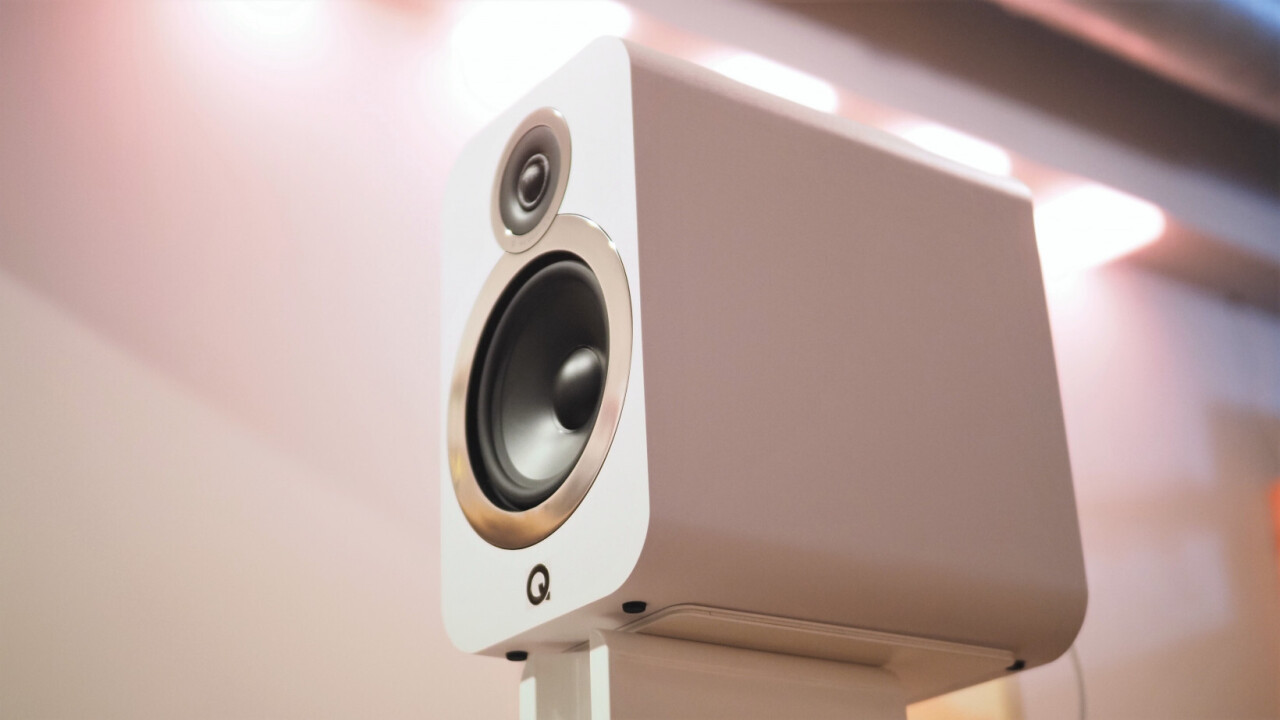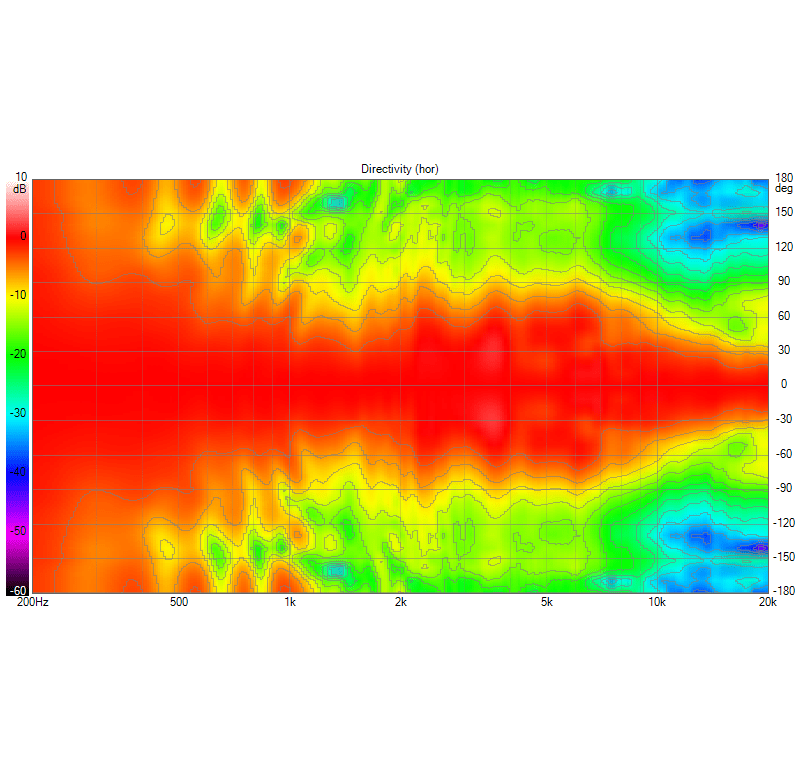
The Q Acoustics 3020i has been one of my top bookshelf speaker recommendations under $500 since I reviewed them last year. They ticked most boxes you could ask from an affordable compact speaker, including classy design, solid build quality, and most of all: good sound.
But like any compact bookshelf speaker with a 5-inch woofer, the 3020i had its limits in the bass and power department. So Q Acoustics took the 3020i and supersized it into the new 3030i, featuring a 6.5-inch woofer and a larger cabinet. The price remains comfortably within reach for most audio enthusiasts at $400.

Naturally, as it digs significantly deeper into the bass — Q Acoustics claims 46 Hz — it will likely strike a better balance between size and low-end for many users not wanting to opt for larger towers.
In fact, the 3030i may look a lot like the 3020i, but it borrows more from the tower sibling, the 3050i. Q Acoustics says it’s based the all-new woofer from the design used on the tower model, but used an ‘optimized’ motor to reach surprisingly low for a budget standmount without sacrificing too much efficiency.
Throughout Q Acoustics’ product pages, you’ll also see a lot of talk about eliminating resonances, which seems to be a particular pride point for the company.
Resonating speaker cabinets can have a particularly nasty impact on the sound, as they color all the music you play through the speaker. You want resonances when playing a guitar, but on a speaker, they usually just tell you you’re listening to a pair of boxes rather than live music.
Some companies try to embrace resonances, but Q Acoustics goes to lengths to eliminate them. Using fancy techniques like Finite Element Analysis and Laser Interferometry, the company is able to pinpoint resonances and apply bracing at specific locations most effective at eliminating the harmful resonances.
What I heard
All this translates into speakers that belies their budget pricing. As usual, I write most of my listening notes before performing measurements to compare what I hear to the data.
Compared to the 3020i, the 3030i just feels like “more.” More bass, more dynamics, a more realistic soundstage. They sound bigger than you’d expect from what is still a fairly compact speaker. This illusion is aided visually by the fact the speakers have a small visual footprint, opting for a deeper cabinet rather than a tall and wide one.

Bass is a particularly pleasant surprise, reaching deep enough that I didn’t find myself missing my subwoofer as much as expected. I keep the speakers about a foot or two away from the wall behind them and find them to be nicely balanced at that distance. Your mileage may vary depending on the acoustics of your room, but Q Acoustics includes a foam bung to cover the speaker’s port should you find the bass a bit too boomy.
As with the 3020i, I found the mids on the speaker to be enjoyable in an ever-so-slightly in a laid-back fashion. If you’re the type of person who likes an up-front, in your face type of sound, the 3030i might not be for you, but I suspect most people will find the 3030i’s tuning agreeable.
The highs seem balanced just right to my ears – never too harsh, and with detail presentation I think is on par with more expensive speakers. The 3030i seems to perform quite well at presenting details at low volumes too, which is a quality I appreciate as I do most of my listening at don’t-bother-my-neighbors volumes.
Q Acoustics says it ‘decouples the tweeter’ from the rest of the cabinet to minimize stray vibrations. I’m not able to quantify how effective this treatment is, but subjectively, the speaker surprised me with its level of detail.
In terms of their spatial presentation, the 3030i are the type of speaker that have an expansive, soundstage with a fairly wide sweetspot, but aim more for envelopment over than pin-point precision. Rather than transporting you into the recording space as speakers with narrower directivity tend to, the 3030i seem to invite musicians into your home.
Which style is better is largely a matter of preference, but once again, their soundstage size belies their size, aided by impressive dynamics that are definitely a notch above its predecessor. I personally consider this presentation more realistic than speakers with front-row, pin-point imaging on, but this can also vary by recording.
As usual, you can affect the speaker’s soundstage by angling the speaker forward or straight at your listening position – I found the 3020i sounded best somewhere in between, about 15 degrees off-axis.
I felt the 3030i are speakers with mostly neutral, slightly laid back tuning that sounded good with just about everything I threw at it.
What the data says
The 3030i’s performance is evident in its measurements too. Using a technique that allows me to remove room reflections from my measurements, I can approximate the speaker’s “true” sound without the influence of my room.
Below is a graph colloquially called a ‘spinorama,’ so-called because it involves rotating the speaker to capture its sound at a whole bunch of horizontal and vertical angles — 70 total. The spinorama distills all that data into a more digestible form, giving us a detailed overview of a speaker‘s performance.

Explanations of how to interpret these graphs are provided over at Speaker Data 2034 and Audioholics, but here are the general truths you should know:
- The On-Axis and Listening Window curves should be relatively flat. They represent the ‘direct’ sound of the speaker before any reflections. The On-Axis is measured with the speaker aimed directly at the microphone, while the Listening Window is an average of a few angles to account for the fact most people don’t sit still or centered. These have the biggest impact on our perception of timbre.
- The Early Reflections curve averages various angles to estimate the very first bounces off your walls, floor, and ceiling to reach your ears. These reflections, which are mostly in the front hemisphere, significantly affect timbre too. We want the ER curve to tilt down but otherwise be pretty similar to the Listening Window response. This curve also best predicts the final in-room response.
- The Sound Power curve represents an average of the speaker‘s sound in all directions, but it’s not as useful as the ER curve for speakers that mostly radiate sound forward.
- The Directivity Index and Early Reflections DI curves tell us how similar the off-axis sound is to the direct sound. These are calculated by subtracting the Sound Power and Early Reflections curves from the Listening Window, respectively. Smooth DI curves suggest the off-axis and direct are similar, which bodes well for the soundstage.
- Bumps that persist in both the direct and off-axis sounds suggest an audible resonance. Resonances remind you you’re listening to boxes as they color all music equally.
For the speaker nerds, the below gallery includes more data, including a more detailed breakdown of horizontal and vertical directivity.
Overall, I think the 3030i put up an admirable performance for the price. The direct sound is a bit jagged, but the overall shape of the curve shows a mostly neutral sound, with a few minor anomalies. There appears to be a resonance at about 1,200 Hz, but otherwise the speaker seems to control such anomalies pretty well with the budget cabinet.
The horizontal off-axis behavior is impressive too, considering the design lacks a large waveguide to ensure a smooth transition between the woofer and tweeter. While large waveguides often narrow the soundstage; Q Acoustics seems to have preferred aiming for an overall wide off-axis using a minuscule waveguide instead. Note the wide and decently controlled horizontal directivity up to about 7 kHz.
As with most speakers, it’s the vertical portion that seems to be the speaker’s biggest weakness, so make sure to align these at the proper height, with the tweeter at ear level.
As a consequence of the vertical response, we see a bit of a scoop in the crossover region of the spinorama, where the woofer transfers its sound over to the tweeter, but it is not as exaggerated as I’ve seen on other models with similar designs; in fact, it appears to be less substantial than the one on the smaller 3020i.
That said, the measurements suggest the presence region from 4 kHz to 6 kHz may sound a little bright, though I didn’t find this to be the case in my listening. In any case, I am usually willing to sacrifice some even-ness in the off-axis sound for a wider soundstage.
Lastly, you can also see the speaker’s solid bass extension here; Q Acoustics’ claim of -6dB at 46Hz seems honest. In a typical room, which will reinforce the bass, you should get a decent amount of sub-bass too.
The 3030i are not perfect, but these are $400 speakers – I’ve seen far more expensive speakers that measure worse. I already thought the 3030i were great performers for the price, but the 3030i both sounds and measures better – even before you factor the extra bass.
Another strong performer from Q Acoustics

Q Acoustics seems to have done what it set out to do with the 3030i – it created a bigger and better version of the 3020i, or alternatively, a smaller version of its towers. The 3030i improves on the frequency response of its smaller sibling, adds more bass, keeps the classy looks, and is priced at a very reasonable $400. What’s not to like?
The 3030i is available directly from Q Acoustics for $400. The company isn’t currently shipping units due to COVID-19, but is taking pre-orders to ship as soon as its warehouse re-opens.
Get the TNW newsletter
Get the most important tech news in your inbox each week.








